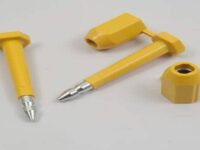Unlocking Growth: Overcoming Challenges in Implementing Equipment-as-a-Service (Equipment-as-a-service) Models

The landscape of equipment leasing, and asset finance is rapidly evolving, with a shift towards service-oriented business models gaining momentum. Equipment-as-a-service is at the forefront of this transformation, holding an estimated potential of 2 trillion dollars, according to McKinsey. In fact, one in three leasing companies are now exploring the deployment of as-a-service models. Embracing this shift early on is not just advantageous; it is essential for staying competitive and retaining customers in the evolving market.
At Odessa, drawing from our extensive experience spanning more than two decades in the leasing and asset finance industry, we havewitnessed the industry’s transition towards a more circular economy. However, transitioning from a traditional product-based approach to a service-oriented product-based approach comes with its own set of challenges. This article aims to shed light on these challenges, offering insights to help you navigate the path towards successful equipment-as-a-service implementation.
Equipment-as-a-Service in the Asset Leasing and Equipment Finance Industry
Equipment-as-a-service marks a significant departure from traditional models in the asset leasing and equipment finance industry. This innovative approach empowers leasing companies and equipment financiers to offer their assets on rent or lease through flexible, long- or short-term subscription contracts. It introduces a paradigm shift with its focus on service-oriented solutions over traditional ownership models.
By adopting as-a-service models, leasing companies and equipment financiers can diversify revenue streams and offer customers pay-per-use options, creating a more dynamic and customer-centric approach to asset management. This model embraces the concept of servitization, where the emphasis shifts from mere product ownership to delivering value-added services along with the equipment itself.
1. As-a-service enables” –
As-a-service enables companies in the asset leasing and equipment finance sector to provide a comprehensive solution that includes not just the physical asset but also ongoing services, maintenance, and support. This comprehensive approach allows customers to access equipment on a subscription basis, aligning costs with actual usage and providing a more cost-effective and flexible alternative to traditional ownership models.
2) “streams: Equipment-as-a-service opens”
Key Components of Equipment-as-a-Service
Multiple revenue streams: Equipment-as-a-serviceopens new revenue streams for leasing companies and equipment financiers. By offering equipment on a subscription basis, companies can generate revenue from recurring payments, usage fees, and additional services provided.
Pay-per-use models: Customers benefit from pay-per-use models, where they pay based on actual usage rather than a fixed ownership cost. This flexibility allows businesses to scale their usage up or down as needed, optimizing costs and resource allocation.
3) “have witnessed”
Consumption-based revenue: Equipment-as-a-service introduces the concept of consumption-based revenue, where companies charge customers based on the quantity or extent of their use of the equipment. This aligns costs more closely with value delivered, providing a win-win scenario for both parties.
4. revenue: Equipment-as-a-service”
In summary, equipment-as-a-service in the asset leasing and equipment finance industry represents a shift towards more customer-centric and flexible solutions. By offering equipment on a subscription basis with pay-per-use and consumption-based models, companies can diversify revenue streams, provide cost-effective options for customers, and embrace the concept of servitization for enhanced value delivery.
Common Challenges in Implementing Equipment-as-a-service
1. Refining Your Financial Structure
Price-setting challenges: Determining the pricing for the service components of an Equipment-as-a-service offering can be complex. Calculating the total lifetime of service provision accurately without overcharging or undervaluing services is crucial.
Managing multiple revenue streams: Equipment-as-a-service introduces diverse revenue streams from renting, leasing, selling, and pay-per-use models. Without defined processes, there is a risk of revenue loss and unaccounted usage.
Prefinancing assets: As the ownership of products remains with the lessors, prefinancing products for a pay-per-use model requires significant financial restructuring, impacting P&L statements and balance sheets.
2. Supply Chain Integration and Logistics
Rethinking product lifecycle: Equipment-as-a-service extends the product lifecycle beyond the traditional “selling” phase. Manufacturers must develop asset return processes, agreements, and SLAs with suppliers, vendors, and distributors.
Organizing reverse logistics: Accommodating the reverse logistics of service-based products involves creating processes for product return, reuse, refurbishment, recycling, or end-of-life decisions.
Adding renting and leasing: Transitioning to Equipment-as-a-service involves introducing renting and leasing initiatives alongside existing business models. This dual approach requires careful management to prevent overstretching teams and compromising existing revenue streams.
Change in product warranties: With ownership retained by the lessors, managing product warranties and maintenance during usage becomes a new responsibility, requiring coordination across multiple teams.
3. Selling ‘Experience’ Over ‘Products’
Convincing customers: Transitioning to Equipment-as-a-service requires convincing customers of the value of new payment models, contracts, and responsibilities. Effective communication and value proposition articulation are key.
Focus on customer service: Delivering consistent and reliable customer experiences is vital for Equipment-as-a-service success. Hiring the right people and implementing appropriate systems are essential to enhance service quality.
5. Acquiring fresh skills”
Acquiringfresh skills: Shifting to a service-oriented mindset demands new skills, focusing not just on product functionality but also on customer satisfaction and service quality.
Redefining marketing strategies: Incorporating services into products requires a reevaluation of marketing strategies, from communication channels to customer needs analysis.
4. Managing Volatile Cash Flow
Stabilizing revenue: Equipment-as-a-service introduces revenue unpredictability due to flexible contracts. Monthly income fluctuations, especially with varying service volumes, require careful cash flow management.
Adapting to industry trends: Market demand and customer spending habits continuously evolve. Lessors must stay agile and adjust services to align with changing trends.
6) “equipment-as-a-service presents”
Entering new markets: Implementing equipment-as-a-servicerepresents a business innovation. Assessing risks, feasibility, and navigating uncertainty in uncharted territories is a critical aspect of entering new markets.
5. Facilitating Change Management
Transforming mindsets: Shifting from a product-centric to a service-oriented mindset requires a cultural shift within the organization. Overcoming resistance and fostering a customer-centric approach is crucial.
Aligning with leadership: Gaining buy-in from leadership for equipment-as-a-service initiatives is essential. Senior management alignment ensures organization-wide support for strategic changes.
Hiring the right talent: Equipment-as-a-service demands leaders with cross-functional skills to drive strategic change. Engaging staff at all levels and mapping visions are critical for successful change management.
Overcoming challenges with technology and expertise
While the challenges of implementing equipment-as-a-service are significant, they can be effectively managed with the right technology and expertise. Industry-specific software solutions, such as Odessa’s subscription management software offer streamlined processes for financial management, supply chain integration, customer relationship management, and more.
At Odessa, we have empowered numerous enterprises worldwide to navigate the complexities of equipment-as-a-service implementation through our tailored software solutions. By leveraging our expertise and innovative technologies, lessors can address the challenges outlined above and unlock the full potential of equipment-as-a-service models.
Embracing the Future of as-a-service
In conclusion, the adoption of equipment-as-a-service models represents a transformative shift in the leasing industry. While the road to successful implementation may present challenges, proactive planning, strategic partnerships, and technological solutions can pave the way for success.
By understanding and addressing the challenges associated with equipment-as-a-service, lessors can position themselves at the forefront of innovation, enhance customer satisfaction, and drive sustainable growth. As the industry continues to evolve towards service-oriented models, embracing change and leveraging the right tools will be key to unlocking new opportunities and staying ahead of the competition.
At Odessa, we are committed to supporting lessors on their journey towards equipment-as-a-Service excellence. Contact us today to learn more about our industry-specific solutions and how we can help you thrive in the era of service-centric leasing.






